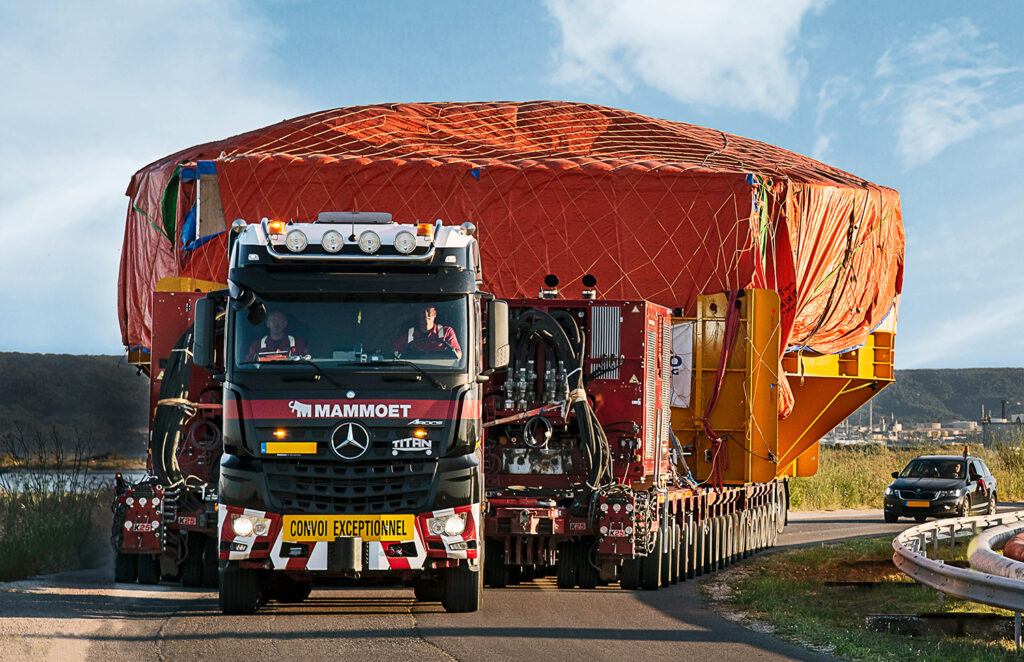
With the help of the recently introduced Trailer Power Assist (TPA), an innovative development by Mammoet and Scheuerle, the Dutch heavy-load service provider was able to transport a 430-tonne coil using only two tractor units. Without TPA, six towing vehicles would have been required. In addition, the technology reduced the time required for the transportation by half.
The experimental nuclear fusion reactor ITER (International Thermonuclear Experimental Reactor) is a groundbreaking project which, following its planned completion in 2025, is expected to demonstrate how electricity can be generated with the help of nuclear fusion. Likewise of a pioneering nature is how the Dutch company, Mammoet, which by its own account is the world’s largest service provider in the field of technical lifting and transport solutions, transported two 430-tonne reactor components from the port in Marseille over a distance of more than 100 kilometres through southern France.
More performance
Mammoet used the Trailer Power Assist (TPA) for transporting the field coils on behalf of Daher Technologies, a specialist in nuclear fuel logistics whereby Scheuerle produced the TPA according to Mammoet’s specifications. With 1,000 hp engine power, a traction force of 400 kilonewtons along with an innovative hydraulic drive, the TPA generates more drive power than any other solution in this category, Scheuerle says. What would otherwise have required six tractors units, two trucks were sufficient due to the additional thrust provided by the TPA.
High speed required
The high traction force combined with the extraordinary manoeuvrability of the TPA also made it possible for Mammoet to cover the distance in a relatively short time. Because the route included numerous motorway sections, Mammoet had to handle the transport as quickly as possible so that traffic was affected as little as possible. The TPA actually managed its first long-haul assignment in half the specified time. As a result, the system impressively demonstrated its exceptionally high level of efficiency.
Empty journey at 80km/h
Once the transported goods have been delivered at their destination, the truck can pull the TPA to the next location in freewheel mode at a maximum speed of up to 80 km/h. But that’s not all. The ballast requirements of conventional tractors are eliminated with the TPA likewise the time-consuming need for coordination between the drivers that normally occurs in a multi-truck combination in order to synchronise the braking and steering behaviour. Consequently, the TPA also increases the safety of the transport assignment. By reducing the total weight of a transport and the number of tractor units, the TPA also improves the fuel balance, Scheuerle says.
